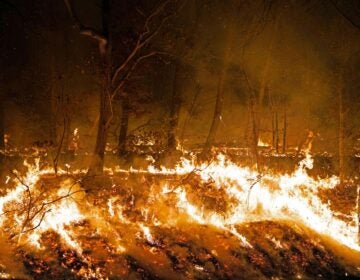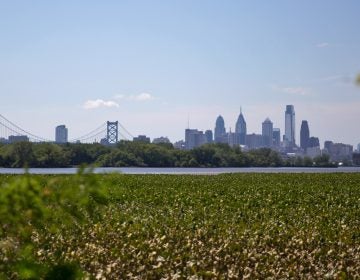‘An injustice’: 2 years after Tropical Storm Isaias, Eastwick residents still recovering without federal aid
Tropical Storm Isaias damaged hundreds of homes in Philly. In low-lying Eastwick, residents are still recovering.
Listen 4:45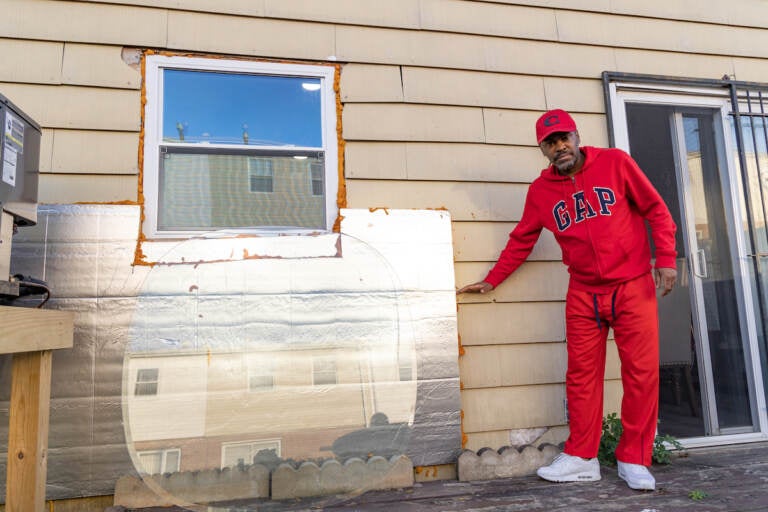
Lemuel Bannister estimates the height of the flooding caused by Isais in 2020. Holes along the bottom of the siding are covered up with an insulation board to keep his pipes from freezing in the winter. (Kimberly Paynter/WHYY)
This story is part of the WHYY News Climate Desk, bringing you news and solutions for our changing region.
From the Poconos to the Jersey Shore to the mouth of the Delaware Bay, what do you want to know about climate change? What would you like us to cover? Get in touch.
On a cloudy Saturday morning, volunteers gathered on a block of three-story, brick rowhomes in Philadelphia’s Eastwick neighborhood.
They brought power tools, t-shirts with their names written on them, and donuts.
Brian Buhman, an operations manager with Team Rubicon — a nonprofit that sends volunteers out to help with disaster recovery all over the country — stood in front of the home of Jehu Brown. Buhman read from a piece of paper describing some of the repairs that still needed to be done, more than two years after Tropical Storm Isaias brought devastating flooding to the neighborhood in August, 2020. The storm also brought widespread power outages and a tornado to the region.
“Some taping and mudding in the bathroom to finish that up — and then door trim, doorknob, installation, possibly some painting,” Buhman said. “Then prepping the floor for flooring to get put in.”
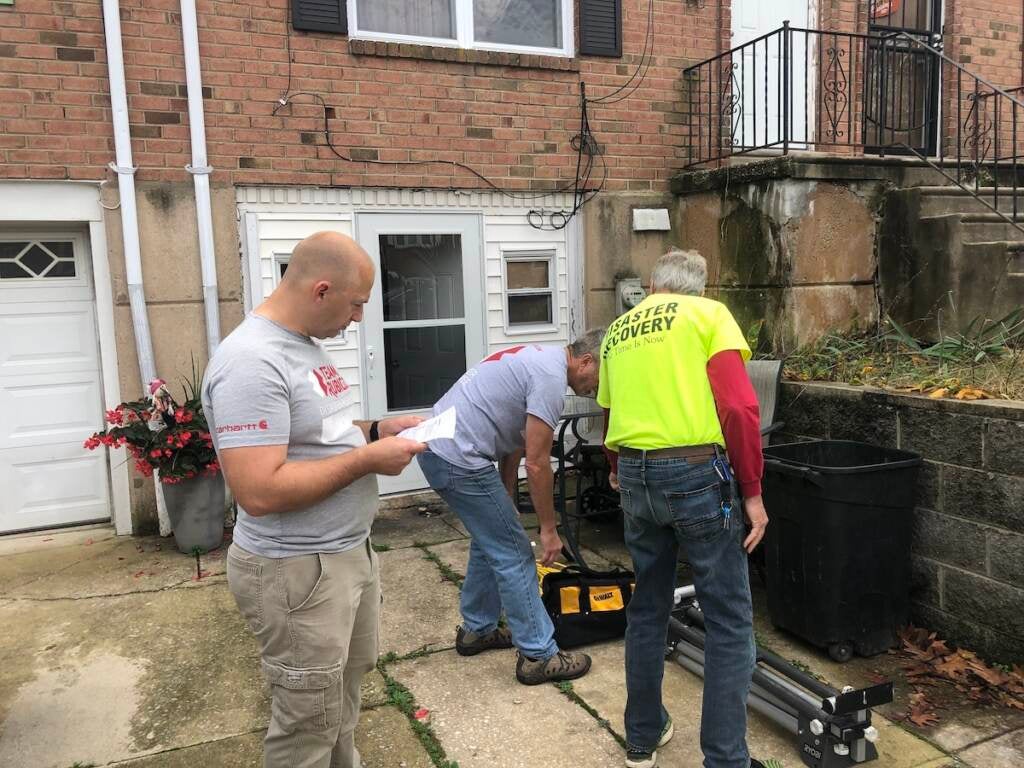
Jehu Brown’s home, like many others in Eastwick, was built in the floodplain, near a point where two creeks merge. The neighborhood has flooded multiple times, requiring residents to be rescued by boat, damaging homes, and destroying cars.
Brown was sleeping when the flooding from Isaias started.
“The water came up to waist level from … Cobbs Creek,” he said. “It started to rise very fast, and we had to get everything out of the way.”
Brown and his wife were displaced from their home for more than a week, he said. They did not have flood insurance, and their home needed lots of repairs.
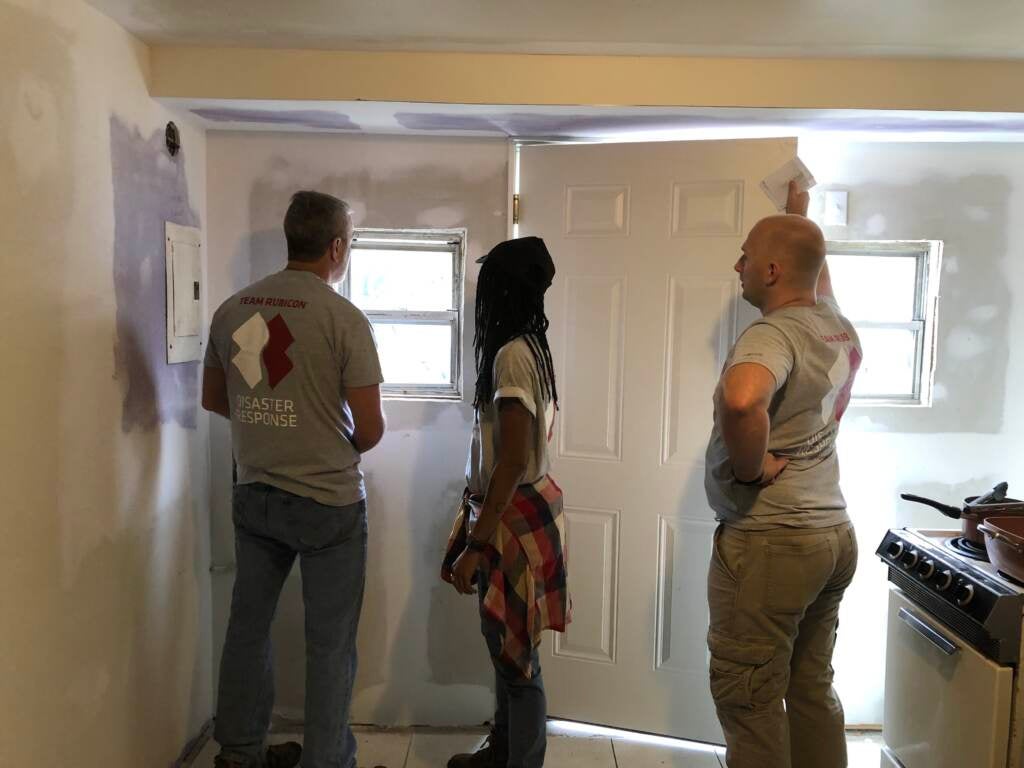
“The hot water heater, the furnace, the whole air conditioning system had to get removed,” he said. “All the tile and drywall and studs, foundation — everything had to be replaced.”
But there was no federal aid available — even though Tropical Storm Isaias damaged at least 2,000 residential buildings in nine Pennsylvania counties, according to initial damage assessments collected by the state.
The Federal Emergency Management Agency (FEMA) denied Pennsylvania’s request for a disaster declaration that could have unlocked funds to help homeowners like Brown make repairs and prepare for future disasters.
In a letter to Governor Tom Wolf, FEMA’s administrator at the time said the agency determined federal assistance was “not necessary” — because the event was not of “such severity and magnitude as to be beyond the capabilities of the Commonwealth, affected local governments, and voluntary agencies.”
In Philadelphia, close to 500 single-family homes and 85 multi-family residential buildings had major or minor damage.
Low-interest loans were available through the federal Small Business Administration. But the state government does not have a dedicated fund to give grants to survivors.
“We were left in our neighborhood with homes … that were damaged by a very serious storm,” said Victor Jackson, a longtime resident of Eastwick and vice chairperson with the neighborhood organization Eastwick United CDC. “Nobody was coming to help.”
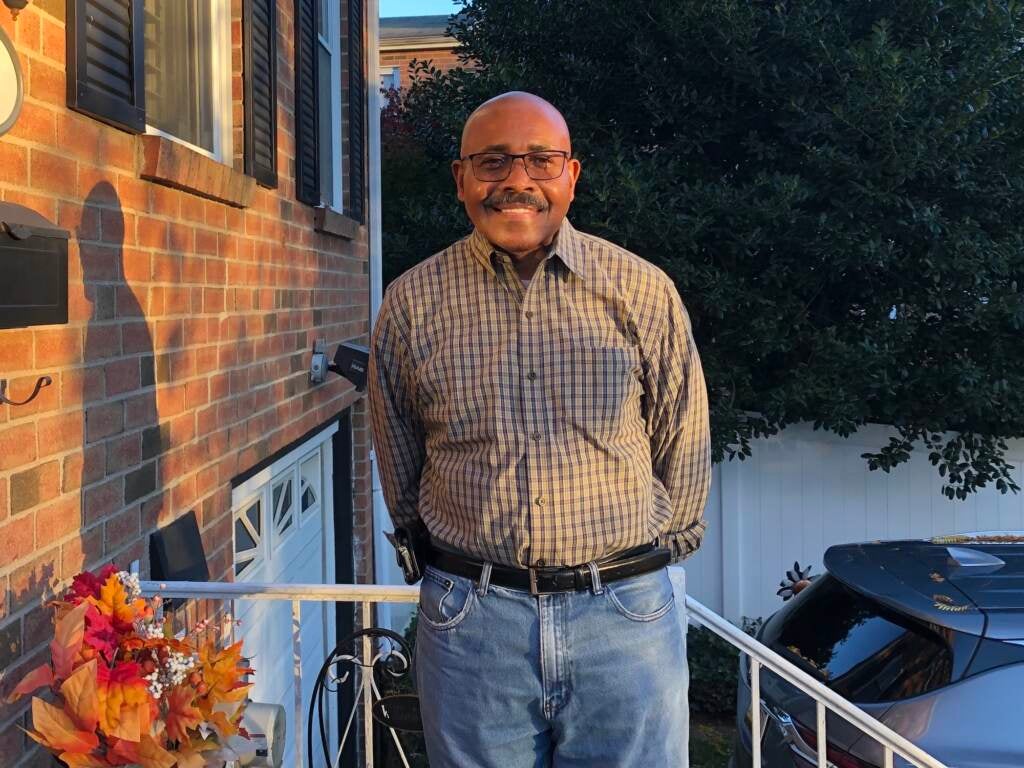
A coalition to meet “unmet needs”
In the absence of FEMA aid, neighborhood organizations including Eastwick United joined with local and national faith groups, disaster relief organizations, and city agencies to fill the gap. The coalition is called the Eastwick Unmet Needs Roundtable.
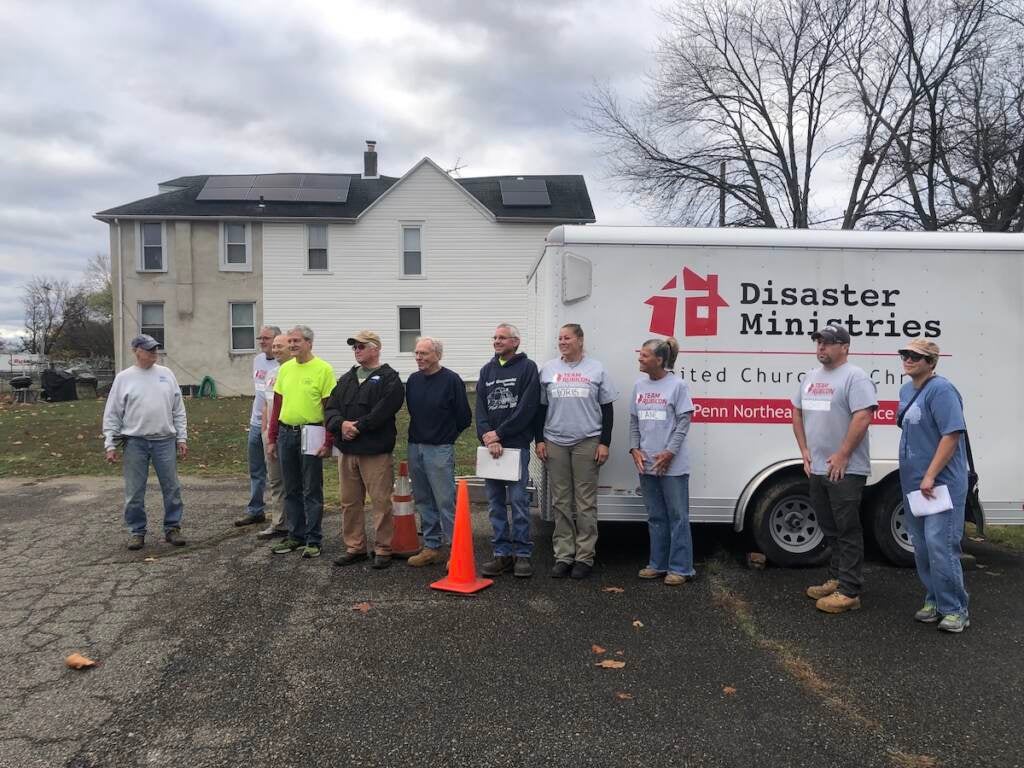
The group identified several dozen households that needed help repairing their homes, getting rid of mold, or replacing damaged appliances. The city pitched in $100,000 worth of HVAC and hot water heater repairs. Volunteers — like the ones with Team Rubicon — have contributed thousands of hours of construction work.
More than two years later repairs in Eastwick are still not done.
Stacey Ford lives in the neighborhood and works as a case manager for the Unmet Needs Roundtable, connecting with homeowners, determining whether they qualify for other assistance programs, and presenting their cases to voting members of the Roundtable for funding approval.
Ford also worked on Hurricane Sandy recovery in New York in 2012, and said even when the federal government declares a disaster, recovery often takes years.
“There’s a big misnomer regarding how long it takes to recover from a flood,” Ford said. “It takes a minute.”
Ford said the volunteer work in Eastwick was also slowed by COVID-19 and supply chain issues.
“Those factors made it a perfect storm for it to take this long, and it can go longer,” she said. “Other disasters happen, so many of the people that would have helped us here in terms of volunteers may be in Florida right now, or maybe in Bucks County dealing with the flooding that happened as a result of Ida.”
Jackson, of Eastwick United, said the Roundtable has shown the importance of various community groups coming together to build power.
“We’ve taken the bull by the horns, so to speak,” Jackson said. “It’s just very gratifying. But then it also opened up our eyes to some things that we have to work on. … We have to have [political] leaders that are willing to go out and go to bat for us, to get things like funding.”
Two floods, different responses
Roughly a year after Isaias, the remnants of Hurricane Ida brought destructive flooding and tornados to the Philly region. FEMA declared a disaster, clearing the way for assistance to households in eight Pennsylvania counties, including Philadelphia. Tens of thousands of Philadelphians applied for aid, receiving close to $88 million, according to the city’s Office of Emergency Management. FEMA distributed roughly $124 million in total to Pennsylvania households.
The state’s initial damage assessment documented more than twice as many residential buildings affected by Ida than by Isaias statewide, across more than twice as many counties. Far more residential buildings were affected in Montgomery, Bucks, and Chester counties by Ida than Isaias.
But in Philadelphia, Isaias hit roughly four times more residential buildings than Ida did, according to preliminary damage assessments the Pennsylvania Emergency Management Agency sent to FEMA. It’s not clear exactly how many individual housing units were affected, because the assessments do not document building size.
“It’s kind of humbling when you see the structure of what we’re up against — all the hoops and stuff you have to jump through to try to get things done,” said Jackson, with Eastwick United. “Sometimes it seems a little unfair.”
FEMA considers several factors when evaluating requests for disaster declarations, including a state’s “fiscal capacity,” the amount of uninsured home and personal property losses, and characteristics of the impacted population — like age, unemployment rate, poverty status, or disability.
FEMA says it aims to “instill equity as a foundation of emergency management.” But even when federal assistance is available to disaster survivors, FEMA’s own analyses have shown that people with lower-incomes get less assistance than wealthier people. Research has also shown racial disparities in FEMA aid.
Still searching for long-term flooding fixes
Lemuel Bannister knows all about how long recovery can take. He spent the first winter after the flooding from Isaias in Eastwick without heat — before the Unmet Needs Roundtable replaced his heater and air conditioner.
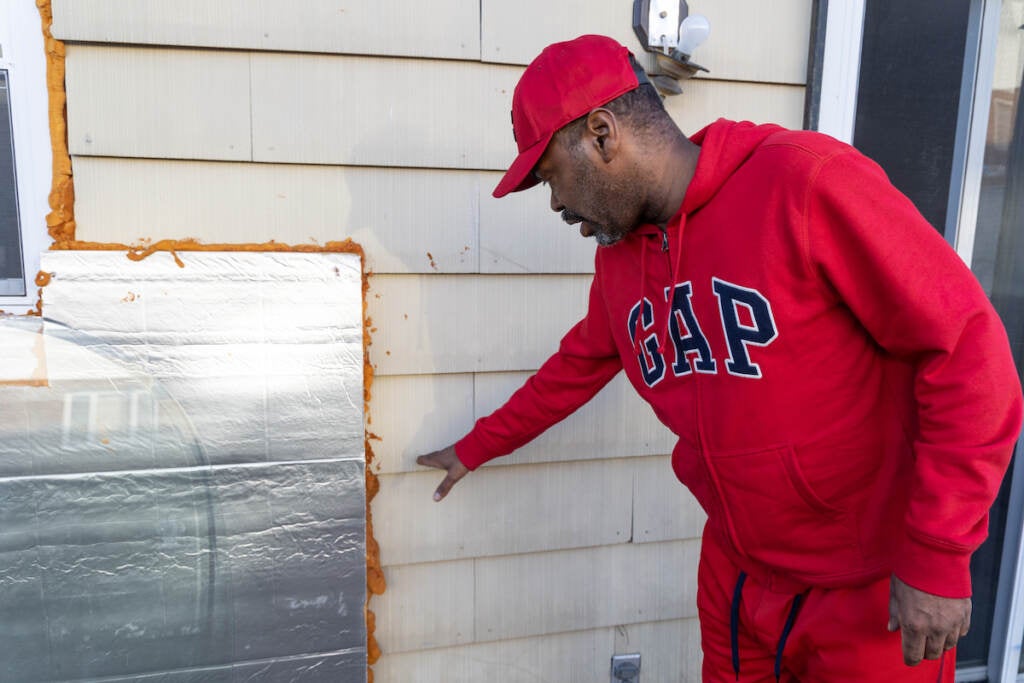
Flood insurance paid for a portion of other major repairs his home needed, like new kitchen appliances, new walls, and a hot water heater. But it left a gap of over $20,000 that Bannister needs to pay out of pocket.
Still on Bannister’s to-do list are repairs to the rear wall of his house — where the flood left holes in the asbestos siding. A big shiny insulation board covers the area for now, to keep his pipes from freezing.
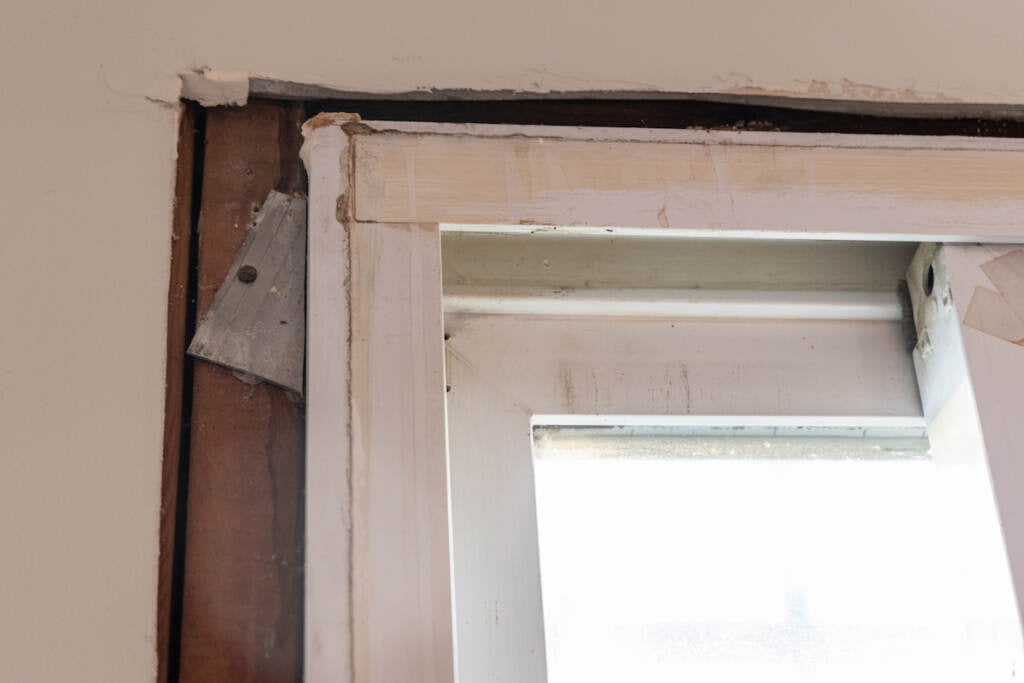
Bannister is grateful for the repairs he’s been able to make so far, but worries about older neighbors, who might not have insurance, or who’ve been through several floods.
“We have other people who have lived in this community for 40, 50 years who are retired and who may not have been able to get their homes repaired to where it was prior to the flood,” he said. “And what do they do? There was no assistance for them. I think that that is an injustice that has taken place in this area.”
Eastwick — a working- to middle-class and majority Black neighborhood — is considered an environmental justice community. In addition to the repeated flooding, the neighborhood endured an urban renewal process in the mid-twentieth century that displaced thousands of families. Residents had to fight to get a toxic landfill cleaned up. They are located near I-95, the Philadelphia International Airport, and the currently shuttered oil tank farm associated with the former Philadelphia Energy Solutions Refinery. The tank farm’s new owners have not committed to keeping it closed.
As climate change increases Philly’s flood risk, Eastwick residents like Bannister are anxious for a solution to the flooding.
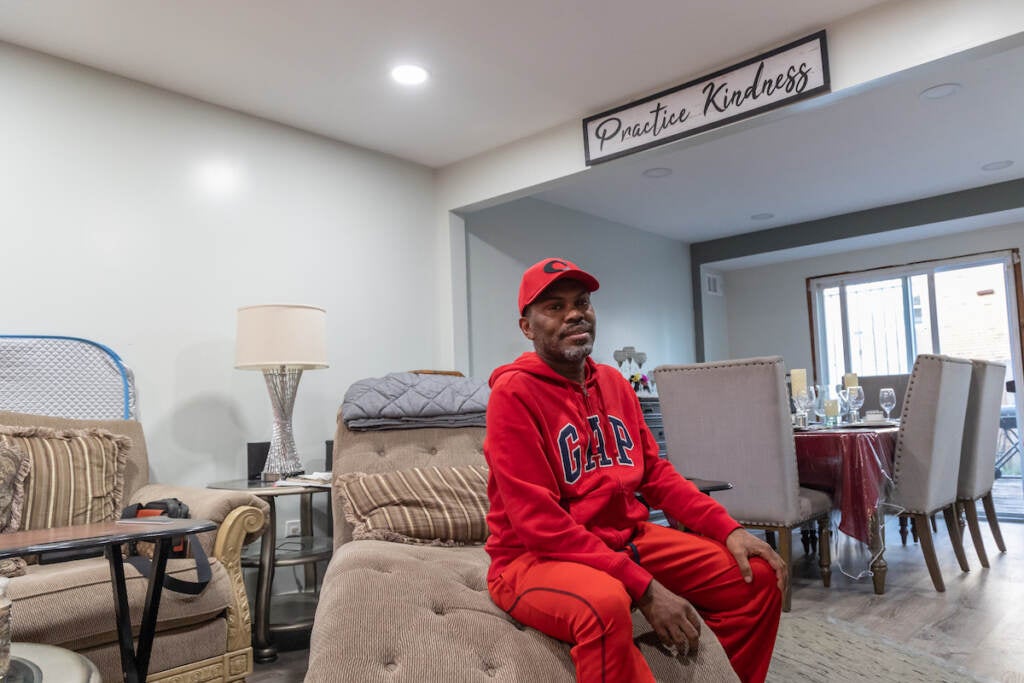
“It’s a very strong neighborhood that really deserves to have peace of mind living in their homes,” said Stacey Ford, the Eastwick resident working with the Unmet Needs Roundtable.
Eastwick’s frequent flooding has been studied for years, and the city hopes to secure federal money to create an “integrated and comprehensive flood resilience strategy” for the neighborhood. A spokesperson for OEM said the city has already been awarded technical assistance from FEMA to develop and put in place flood mitigation measures alongside the community.
Ideas like a levee or buyouts have been discussed. One Eastwick resident has developed a proposal to help people who live on flood-prone streets move to new homes that would be built on higher ground within the neighborhood.
Bannister has reservations about all these solutions — but wants to see something done to make people whole and protect them from future floods, as soon as possible.
“Fix the problem,” he said. “Whatever has to be done in order to alleviate the problem, then let’s get that done.”
The Eastwick Unmet Needs Roundtable is looking for volunteers skilled in carpentry and general construction to help with recovery. Contact volunteer coordinator Sharon Sgriccia at isaiasrecoveryvolunteers@gmail.com.

Subscribe to PlanPhilly
WHYY is your source for fact-based, in-depth journalism and information. As a nonprofit organization, we rely on financial support from readers like you. Please give today.








